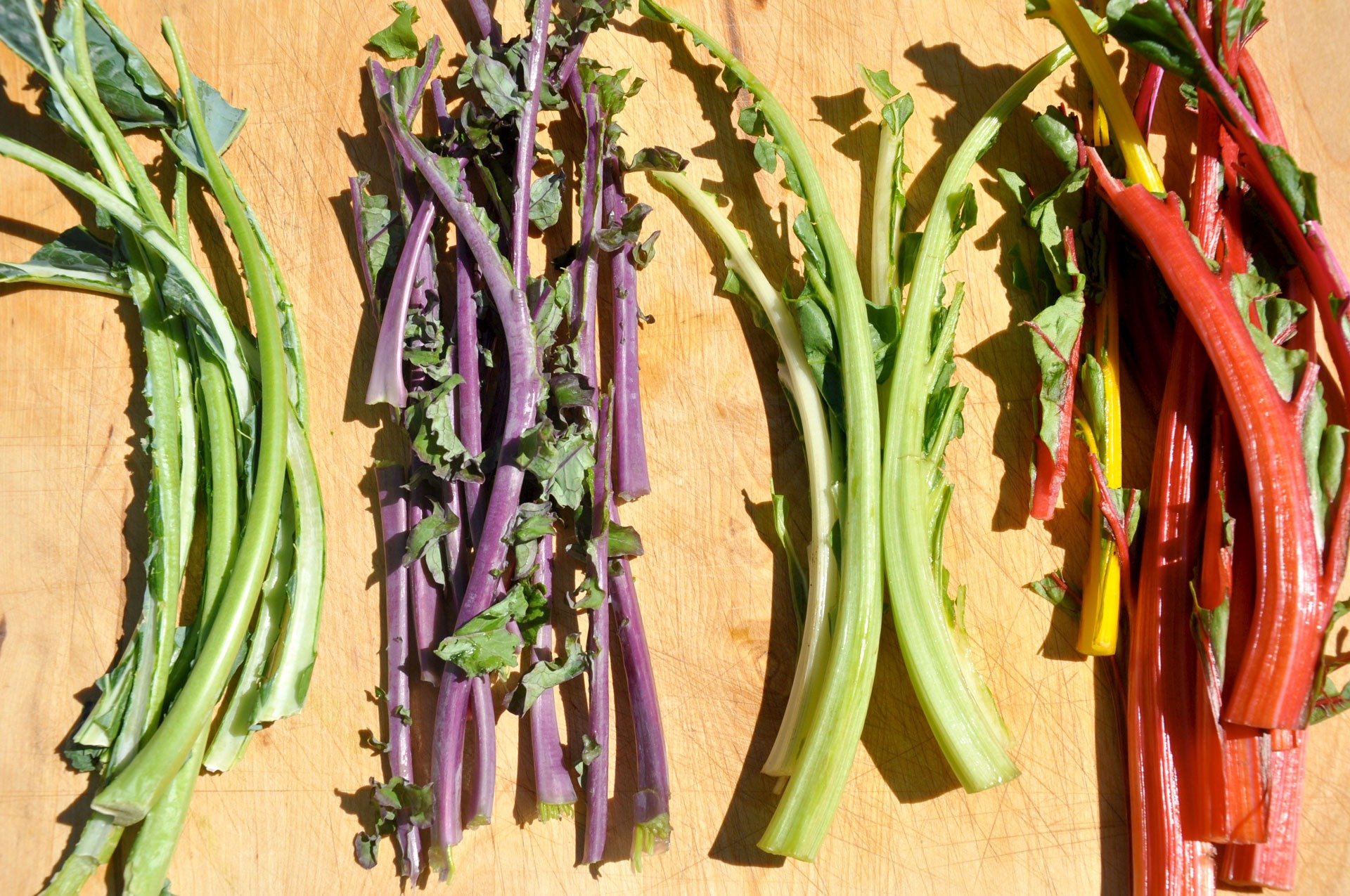Real Food Encyclopedia | Kale
The ruffly green formerly known as highway median beauty queen is having its moment in the culinary sun, and rightfully so. Kale (Brassica oleracea) isn’t just a pretty face; she’s a hardy, unpretentious sort who plays well with others in the kitchen and is about nutritionally virtuous as it gets. She’s the girl next door, an unsung hero now getting her due, from Costco to Whole Foods, Olive Garden to Chez Panisse, Steven Colbert to Dr. Oz.
You can’t talk about kale without talking about cabbage, as both are descendants of a wild cabbage that is more than 2,000 years old. But which came first, kale or cabbage? According to “The Oxford Companion to Food,” “Kale is the more primitive of the two, and was the ordinary greenstuff of country people in most parts of Europe until the end of the Middle Ages, when the ‘headed’ cabbages were bred.”
In his book, “Mediterranean Vegetables,” culinary scholar Clifford A. Wright notes that the earliest record of cultivated cabbages – from Greek literature around 600 BCE – actually is a reference to kale. In fact, not until 16th century Paris would the “first clear reference to head cabbage” emerge.
Did you know?
- While it was referred to as “cole” in England, it was known as “kail” in Scotland, where everyone had a “kailyard” that fed both humans and livestock. “Come to kail” was a common expression referring to the main meal of the day.
- Thomas Jefferson experimented with several varieties of kale at his Monticello estate in the early 1800s.
- Kale was central to Britain’s Dig for Victory campaign, a World War II effort that encouraged Britons to turn their lawns into edible gardens.
What to look for when buying kale
When shopping for kale, stay clear of wilted or browning leaves. Leaves and stalks should be firm and dry versus wilted and mushy.
Sustainability
Pesticides
Like collards and cabbage, conventionally grown kale is a cause for environmental concern, according to the Environmental Working Group. The leafy green landed near the top of the Environmental Working Group’s Shopper’s Guide to Pesticides in Produce, a list the group created to single out produce with the highest loads of pesticide residues.
Because of its skyrocketing popularity, pre-rinsed and trimmed kale is now being sold en masse in bags in supermarket produce sections. As a food safety precaution, we recommend that you rinse bagged kale as thoroughly as you would an unwashed bunch.
Whenever possible, buy organic, particularly at the supermarket, to avoid insecticide residues. And when shopping at farmers’ markets or at farm stands, talk to your grower about production methods. Often growers who can’t afford organic certification are actually farming without chemicals.
Seasonality
Kale is a cool-weather and frost-resistant crop, which means it’s available for up to three seasons, depending on where you live. Home gardeners know that it overwinters nicely and readily sprouts young tender leaves with the arrival of spring.
Eating Kale
Storing
To the best of your ability, keep moisture to a minimum in the refrigerator and store kale in a loosely closed bag or sealed container.
If you’re racing against time, consider freezing for later. Separate stalks from florets and parboil everything for three minutes, then shock in an ice water bath. Drain well, pat dry and place in freezer bags.
Cooking
Pro Tips:
- Remove the middle rib, which can be tough and unpleasantly fibrous, even when cooked. You can do this by hand, with a knife or kitchen shears. (Do note that leftover-rescuing cooks like Tamar Adler, in “An Everlasting Meal,” recommend boiling the ribs until mushy, then pureeing into pesto).
- Wait until after the ribs have been removed to wash leaves, and for raw salads, thoroughly dry. Arrange dried leaves into a mattress-like pile, roll up like a cigar and cut into ribbons. Smaller pieces are easier to “massage” and tenderize.
Kale is delicious steamed, stir-fried, roasted, raw and “massaged,” and is tasty in kale smoothies, kale chips, wilted into soup, mashed with potatoes, kale pesto; the list of uses for this vegetable go on and on.
Preserving
Like pesto for basil, kale pesto is great way to preserve kale because it stores well in the freezer. Use it on sandwiches, pizza dough, pasta or smeared onto roasted vegetables.
Nutrition
If you’re a numbers person, kale is your kind of vegetable: Along with collards, mustard greens and watercress, kale scores a perfect 1000 on the Aggregate Nutrient Density Index (aka ANDI), a measurement that scores nutrients per calorie which has been implemented by Whole Foods Market.
For the rest of us, here’s what makes kale a nutritional super star: Anti-inflammatories in the form of Omega-3 fatty acids and Vitamin K; antioxidants in the form of carotenoids (which were recently studied for their link to positive mental outlook, Vitamins C and E, as well as dozens of flavonoids (found in the pigments); cancer-fighting glucosinolates, just to name a few. For just 36 calories, one cup of kale contains three grams of fiber, 93 mg of calcium, 2.5 grams of protein. Not too shabby.
Kale’s only caveat are its level of oxalates — a possible concern for people with kidney stones — so check with your doctor if this is a concern. According to the nutritional portal WH Foods, its ‘goitrogenic’ tendencies are overblown, and it does not interfere with thyroid function, contrary to popular belief. Again, check with your doctor as needed.
Top photo by wjarek/Adobe Stock.


